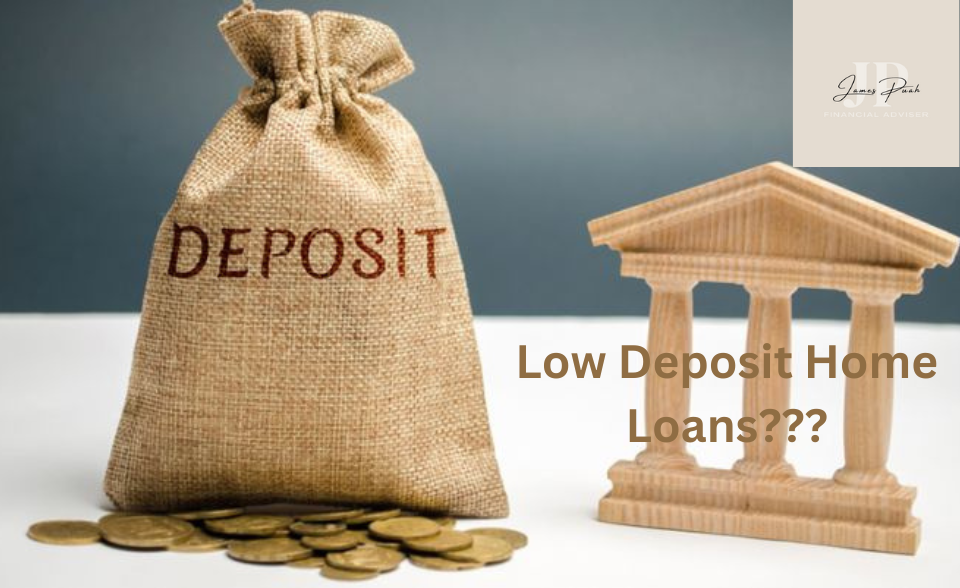You might speak to your bank about low deposit home loans and find they cannot help, but that does not mean there are not options available to you. There are still options for low deposit home loans, but they are harder to get.
In New Zealand we think of low deposit home loans as being those home loans that require less than 20% deposit, but often with as little as 5% deposit.
The lower the deposit, the higher the risk to the bank or non-bank lender and because of this there is often a low equity fee, a low equity margin (which means a higher interest rate) or in some cases a lenders mortgage insurance premium. Generally if you have less than 20% deposit then you will be paying more.
As a mortgage adviser, I am always reviewing the options for low deposit home loans. I want to ensure that you get the option that bests suits your situation.

What Are The Low Deposit Home Loans Options?
The banks are allowed to offer a limited amount of low deposit home loans, but many are deciding not to offer them currently as there is too much instability with house prices. If house prices were to fall, then there is a real risk that the drop will see any equity you have disappear. That means it is difficult to sell the house leaving enough to pay the bank back, and banks do not want to take that risk.
The Government has through Kāinga Ora a couple of options that remove the risk from the banks. These options are known as “First Home Loans” and “First Home Partner” and they work in conjunction with a bank loan.
First Home Partner is a shared home ownership scheme to help first home buyers whose deposit and the home loan aren’t quite enough to buy a home that meets their needs. The minimum deposit needed for the First Home Partner scheme is 5% but more is always better. You purchase a brand new home together with Kāinga Ora taking a share and the bank providing funding for the balance, and then later you buy the share back off Kāinga Ora.
Both of these options have been designed specifically for first home buyers that would otherwise not be able to buy a home. They therefore have set criteria for the lending and you need to check to see if you are eligible.
There are other options too.
YouOwn is a commercial option for shared home ownership and while it is more expensive than the First Home Partner option, it is available on both new and existing homes.
Second Mortgages can be used with some of the non-bank lenders who will fund the balance to 80% of the purchase price and sometimes a bit more too. If you are getting a second mortgage or a private loan to help with the deposit then you will be paying that off over a shorter timeframe; hence affordability is not always as easy.
The “ideal” is to have a minimum of 20% deposit, but sometimes you are better to buy now rather than wait and especially if you can get a good price on a home today.
We cannot predict the future house prices, but it’s almost certain that over time house prices will increase. For this reason it can be a good idea to get yourself ready to buy as soon as you can.
You might find the perfect home one day soon, you might hold off actually buying at the moment.
What Deposit Do You Have?
You should have a close look at what deposit you have or could put together.
In most cases the deposit will be whatever savings you have including your KiwiSaver if you can withdraw it. You may also be able to sell some assets to free up cash and may be eligible for the First Home Grant.
About Kiwisaver – assuming this is your first home, that you have been in KiwiSaver for more than 3-years and contributing regularly then you should be able to withdraw your KiwiSaver balance less the $1,000 kickstart. You will need to contact your KiwiSaver provider and ask them to email confirmation of what you can withdraw. On the email that you receive there should be the form for doing the actual withdrawal and you will need to get onto this as soon as you have an agreement to purchase your new home.
About the First Home Grant – the First Home Grant is for up to $5,000 when buying an existing property or $10,000 on a brand new property. This is effectively “free money” for first home buyers so it is worth seeing if you are able to get it.
CLICK HERE to see if you are eligible.
CLICK HERE to apply for a pre-approval online.
Find Out What You Can Borrow First
The easiest way to get started is to have a quick assessment done.
This is a free service and will let you know the approximate amount that you can borrow, and can highlight any changes needed to get you into a better position for borrowing.
Often it’s a few small changes that can make all the difference.


